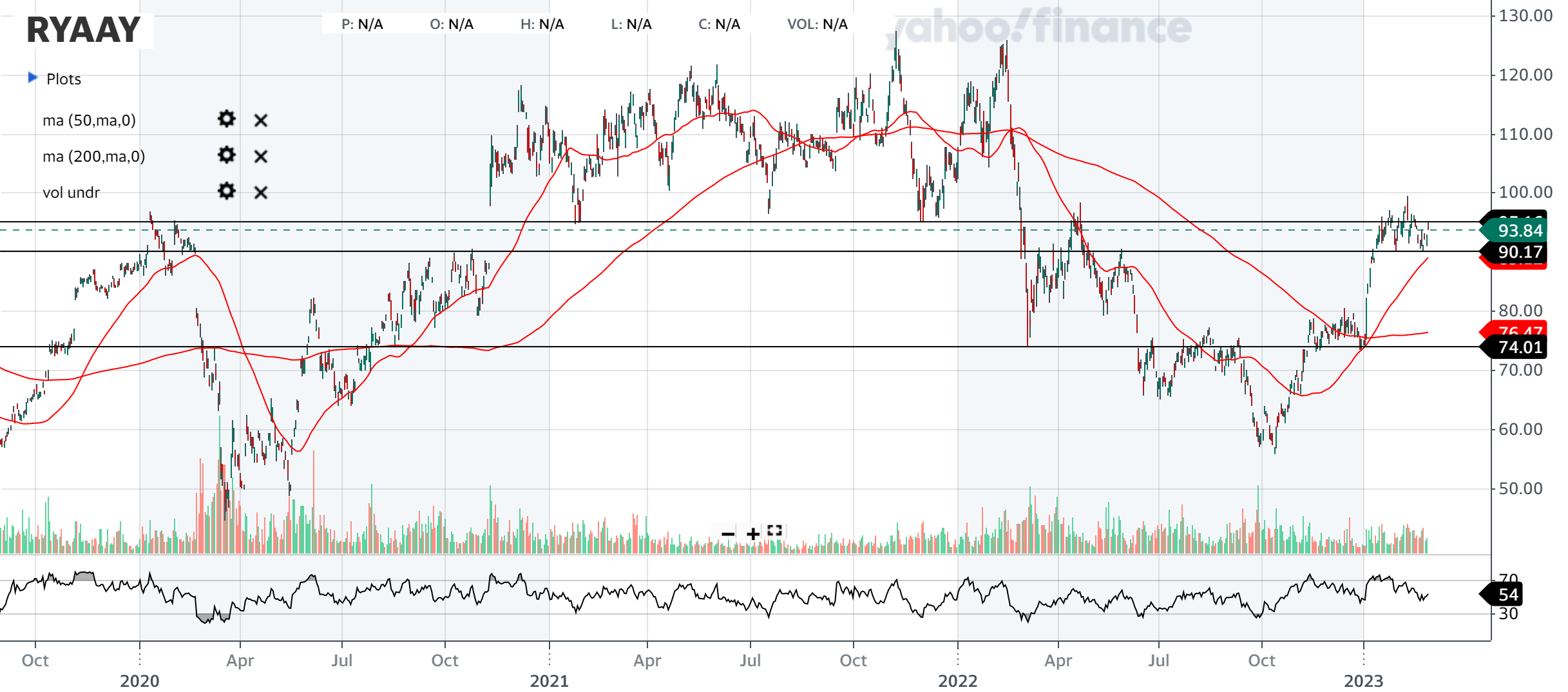Ryanair (RYAAY)

Fundamental analysis
Ryanair is Europe’s largest airline, carrying more than 168 million passengers last year. It currently has 523 aircraft. The company owns almost its entire fleet (most airlines lease or indirectly own aircraft) and 96% of its aircraft are unencumbered by loans. Ryanair has an additional 126 Boeing 737-8200s on order (it already owns more than 84), which have lower fuel consumption and emissions than competitors.
Ryanair is leveraging its capital strength and hedging the oil price a long time in advance. It currently has 88% of its consumption for 2023 covered at $71/bbl (current price $76/bbl). 2024 is 60% hedged at $90. The lower oil price is a significant advantage over competitors. The price of fuel plays a significant role in pricing the ticket for customers and every dollar in the black counts. Standard Boeing 737 fuel consumption is 2 tonnes of fuel per flight hour, which is roughly 9.5 barrels of oil.
Although the whole of Europe is being battered by high inflation, flight bookings are certainly not affected. The 2023 summer season looks excellent. Ryanair expects demand to at least match the pre-Covid period. Some airlines, especially UK airlines, expect demand to be even higher. Package holiday sales are going well.
Results
According to the last published investor report on 30 January 2023, the company had a net profit for Q3 of 211 million euros. Transportation was up 7% from a year ago (and up 24% year-on-year). Airfare was on average 14% more expensive than in the pre-Covid period. Ryanair holds a high cash position, more than €4 billion. According to S&P and Fitch, it holds a BBB credit rating, one of the best in the industry.
Technical analysis
Ryanair has already bounced off the bottom in the autumn of 2022. According to moving averages, it has been in an uptrend for two months. The price is currently between support (which has changed from resistance) at around $90 and resistance (which used to be support) at $95. Both of these lines are long term and important from a chart perspective. Once the resistance at the $95 price is broken, there is room to go up to the $120-130 price. The RSI is in the neutral zone.
Conclusion
Airline stocks are a very volatile segment that reacts quickly to rising or falling demand. The peak airline season is between early June and late September. We are therefore just before its start. The good news on ticket sales is visible and partly already factored into Ryanair’s share price. But if the season goes well (and there is no indication that it won’t), then Ryanair shares may yet climb in the short term. The company is well on its way to profitability, certainly more so than its competitors. In the long term, however, the question is whether the stock will do well due to pressures in Europe to reduce the number of flights and emissions from air travel.
Sources:
https://investor.ryanair.com/wp-content/uploads/2023/01/Ryanair-Q3-FY23-Results.pdf
https://finance.yahoo.com/quote/RYAAY?p=RYAAY&.tsrc=fin-srch
https://